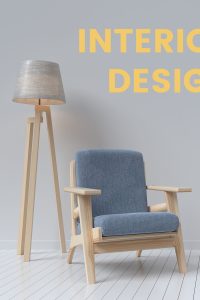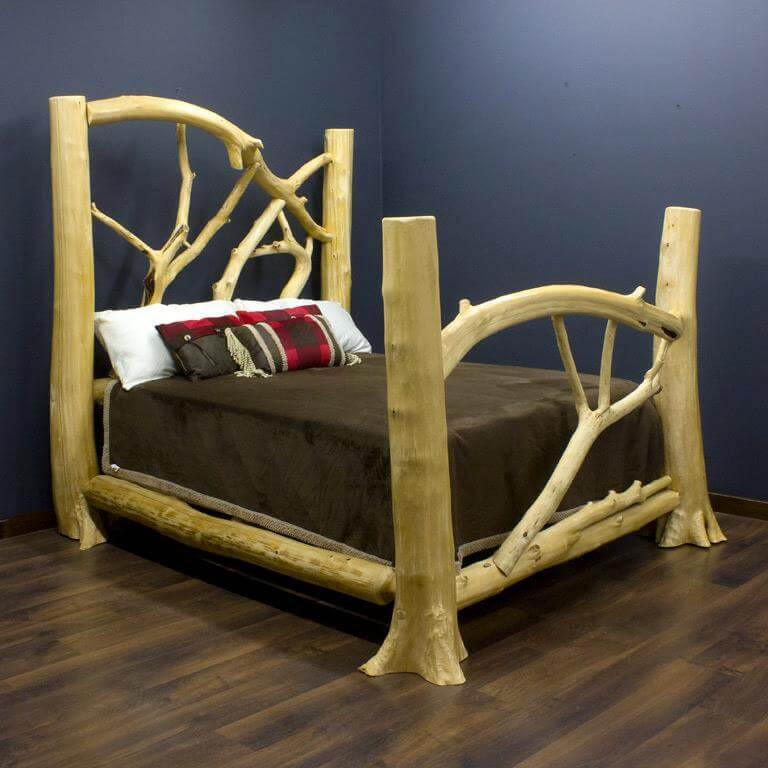Designing a log bed is not just about furniture—it’s about creating a centerpiece that reflects rustic charm, natural beauty, and sturdy craftsmanship. Whether you’re furnishing a cozy cabin retreat or bringing a rustic element into a modern home, a well-designed log bed can set the tone for the entire room.
Log furniture, especially beds, brings the outdoors inside, offering timeless appeal, natural textures, and a sense of tranquility.
In this comprehensive guide, we share the most effective tips and insights on designing log beds that are beautiful, durable, and tailored to your space and style.
Choose the Right Wood Type
Table of Contents
The type of wood you select will affect the look, feel, and longevity of your log bed. Wood choice is the foundation of any log furniture piece, and it’s essential to consider both aesthetic and functional qualities:
- Cedar: Lightweight, aromatic, and naturally resistant to pests and decay. Cedar also provides a warm reddish hue and is popular for both indoor and outdoor log furniture.
- Pine: Affordable and widely available, pine features a pale yellow hue and is relatively soft, which makes it easier to work with for custom designs.
- Aspen: Known for its smooth finish and subtle knots, aspen gives a light, creamy color that complements both traditional and modern interiors.
- Hickory: One of the strongest hardwoods, hickory has a bold grain and high contrast in color. It is ideal for heavy-duty beds and rustic-themed interiors.
Each wood has unique traits—choose based on your budget, design preference, and desired durability. Consider the environmental conditions in your area and the maintenance required for each wood type.
Decide on a Finish Style
Finishing your log bed is essential not only for aesthetics but also for protection. The finish affects how the wood looks and feels, and it determines how well it will hold up over time:
- Natural finish: Leaves the wood raw or lightly oiled to enhance its organic appeal. This style is perfect for those who want to highlight the natural grain and imperfections.
- Stained finish: Offers a deeper tone and adds character to the wood. Stains come in various shades and can dramatically change the mood of the room.
- Polished/lacquered: Adds shine and protects the wood from moisture, dust, and stains. Lacquered finishes are ideal for beds in high-humidity areas or for those seeking a more refined appearance.
Always choose a finish that aligns with your room’s lighting and overall theme. Test finishes on small sections of wood before committing.
Select the Right Bed Size
Log beds are naturally more massive than traditional beds due to the thickness of the logs used. Choosing the right size is crucial:
- Twin or Full: Ideal for children’s rooms, guest rooms, or small cabins.
- Queen: A perfect balance between space and comfort, suited for most bedrooms.
- King or California King: Best for master suites with ample space; these beds offer luxury and comfort.
When deciding on size, always measure the room accurately and consider clearance around the bed for nightstands, walking space, and storage.
Customize the Headboard and Footboard
The headboard and footboard are focal points of your log bed. Customization options include:
- Simple rails: For a minimalist and clean look.
- Carved patterns or engravings: Add intricate detail and artistic flair.
- Antler or twig accents: For a nature-inspired, woodland aesthetic.
- Live-edge wood: Keeps the natural contour of the tree, adding rustic elegance.
You can also integrate features like shelves or hidden storage compartments for extra functionality.
Embrace the Natural Imperfections
One of the most charming aspects of log furniture is its imperfections. Rather than trying to conceal knots, cracks, or twists:
- Highlight them as features that add uniqueness.
- Use logs with distinct textures and grains to bring authenticity.
- Allow asymmetry in the design—it adds personality and rustic appeal.
These imperfections reflect the story of the tree and give your furniture character.
Ensure Proper Joinery and Stability
Stability and strength are critical for beds, and with log furniture, the joinery technique plays a big role:
- Use mortise and tenon joints, which are traditional and reliable.
- Lag bolts or hidden metal braces may be used for added strength.
- Ensure all connections are tightly secured to avoid creaking or wobbling.
If you’re buying from a craftsman or store, ask about the joinery methods and test the bed for stability before purchasing.
Consider Eco-Friendly and Sustainable Sources
With rising awareness of sustainability, it’s important to ensure your log furniture has a minimal environmental impact:
- Choose logs from FSC-certified forests.
- Opt for reclaimed or salvaged wood to reduce waste.
- Work with local artisans who follow eco-friendly practices.
Sustainable wood not only benefits the planet but often carries a richer story and more character.
Pair with Complementary Décor
A log bed should be part of a well-coordinated room. Consider these décor tips:
- Match with wooden nightstands, chests, or rustic dressers.
- Use earthy-toned or plaid bedding to enhance the rustic theme.
- Add vintage rugs, iron lamps, and nature-inspired wall art.
- Bring in soft textures like wool or faux fur throws to balance the rugged wood.
Create a space that feels cohesive, inviting, and authentically rustic.
Incorporate Functional Features
Modern log beds can blend style with function:
- Include under-bed storage drawers for practicality.
- Add USB charging ports or reading lights built into the headboard.
- Consider adjustable slats or support systems to accommodate different mattress types.
These functional features enhance convenience while maintaining rustic aesthetics.
Regular Maintenance for Longevity
Log beds require regular care to keep them looking beautiful:
- Dust frequently with a microfiber cloth.
- Apply wood-safe polish or oil annually.
- Keep away from direct sunlight or high humidity.
- Watch for pests and treat with non-toxic wood-safe repellents if necessary.
Well-maintained log beds can last for decades and even become family heirlooms.
Final Thoughts
Designing a log bed takes thought, creativity, and a deep appreciation for natural beauty. From selecting the right wood and finish to embracing imperfections and integrating functionality, every detail counts.
With these extended and practical tips, you’re well on your way to creating a log bed that’s not only a piece of furniture but a timeless statement of rustic elegance and craftsmanship.
Whether you’re enhancing a mountain cabin or infusing nature into your urban home, a thoughtfully designed log bed will bring warmth, comfort, and character for years to come.

